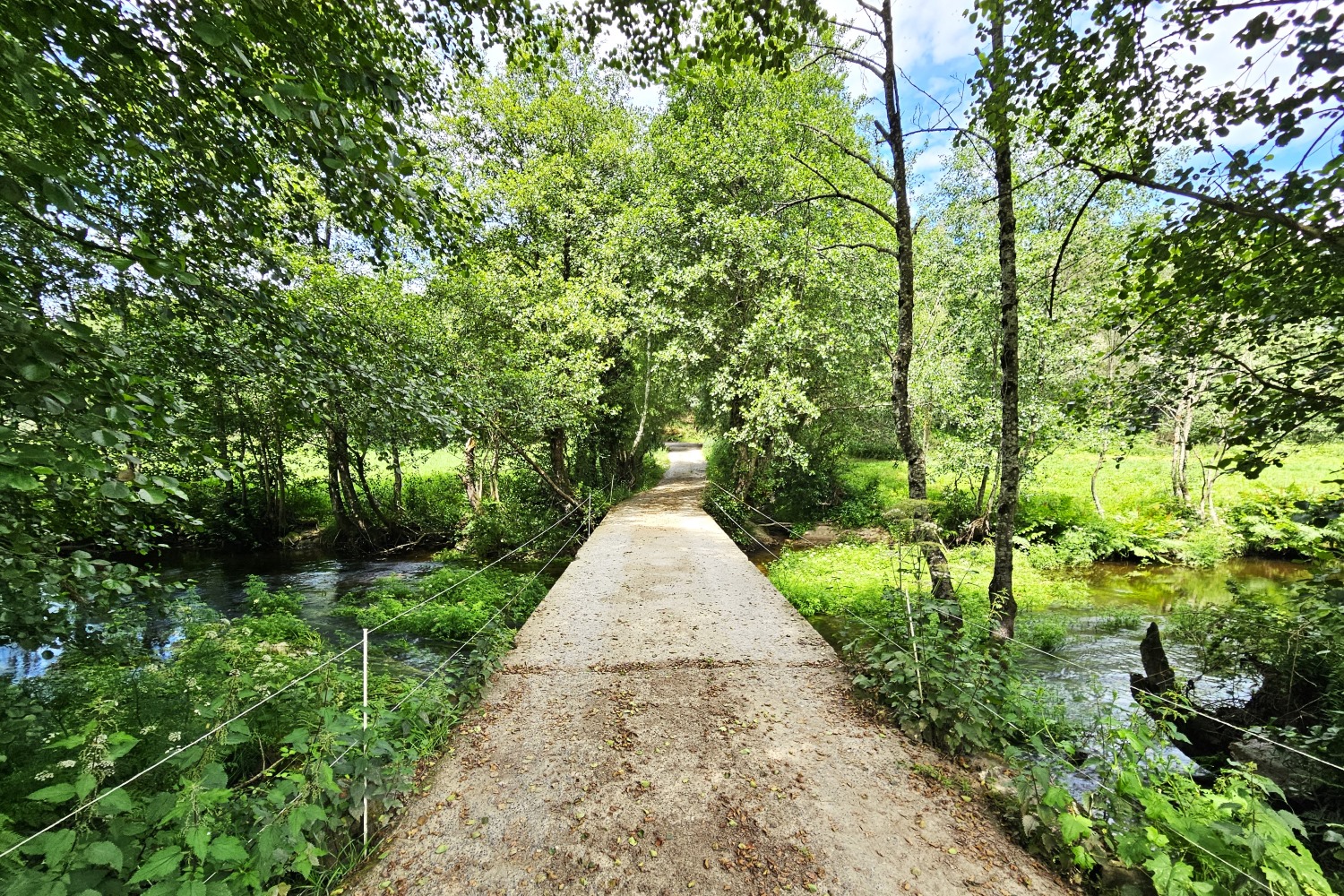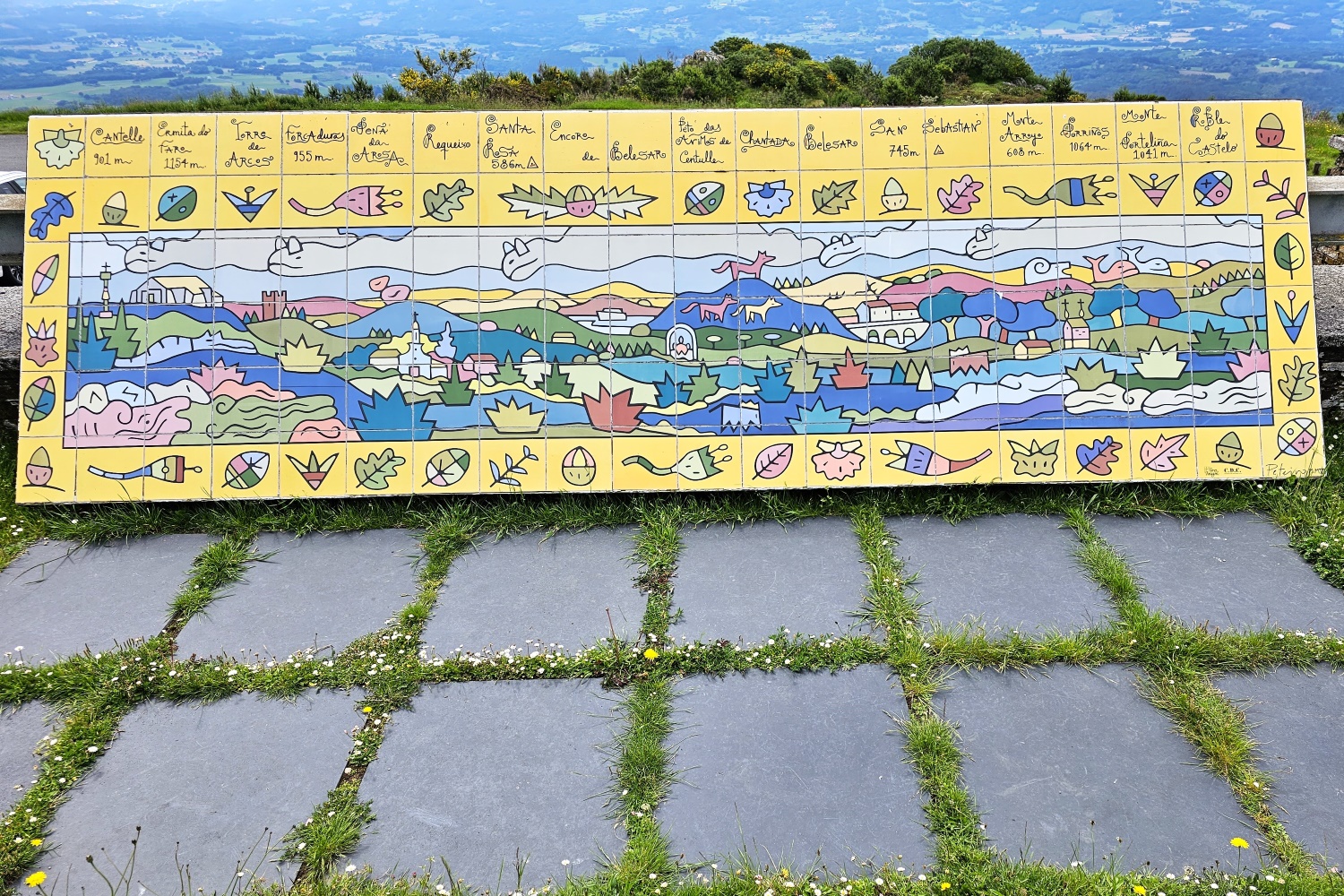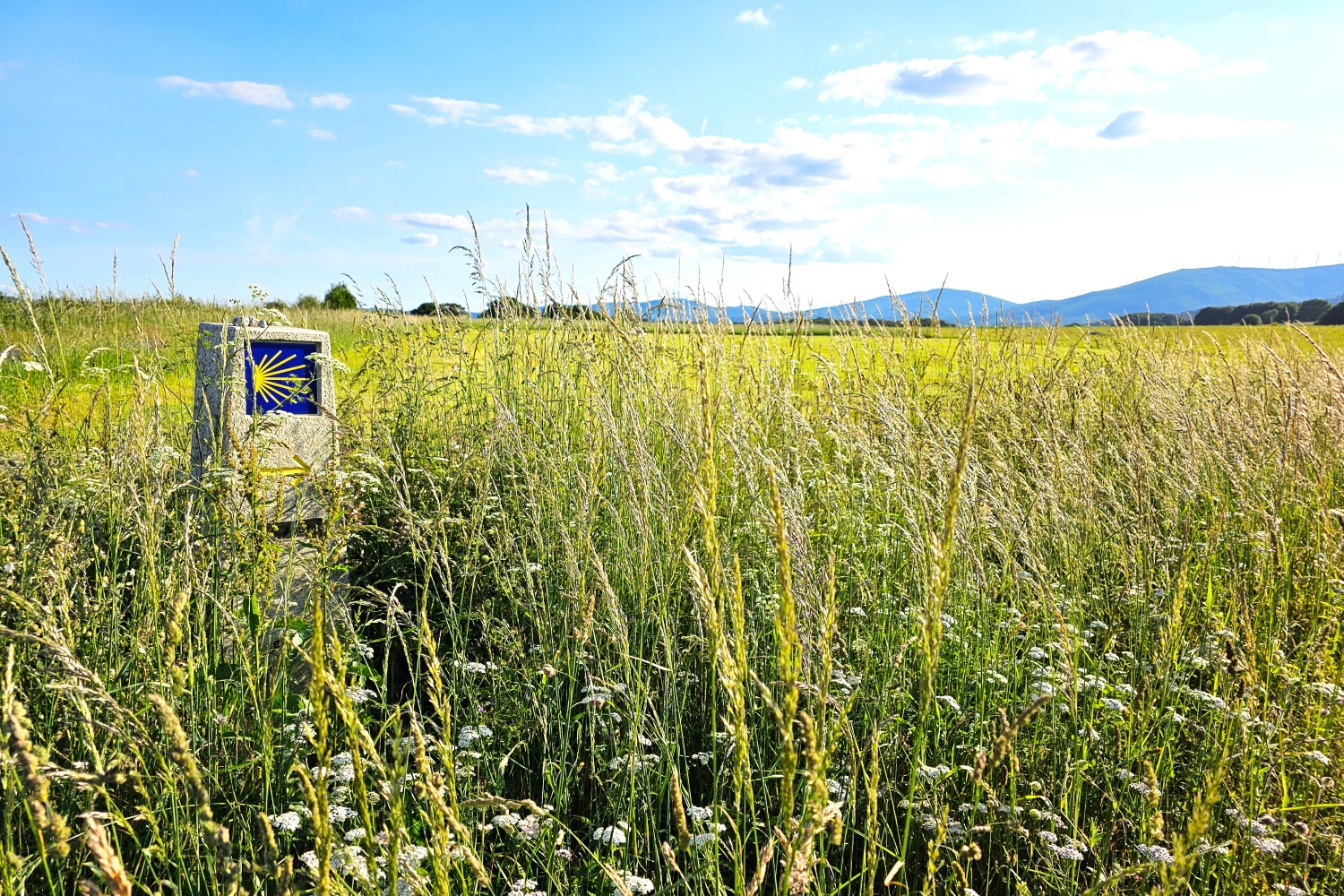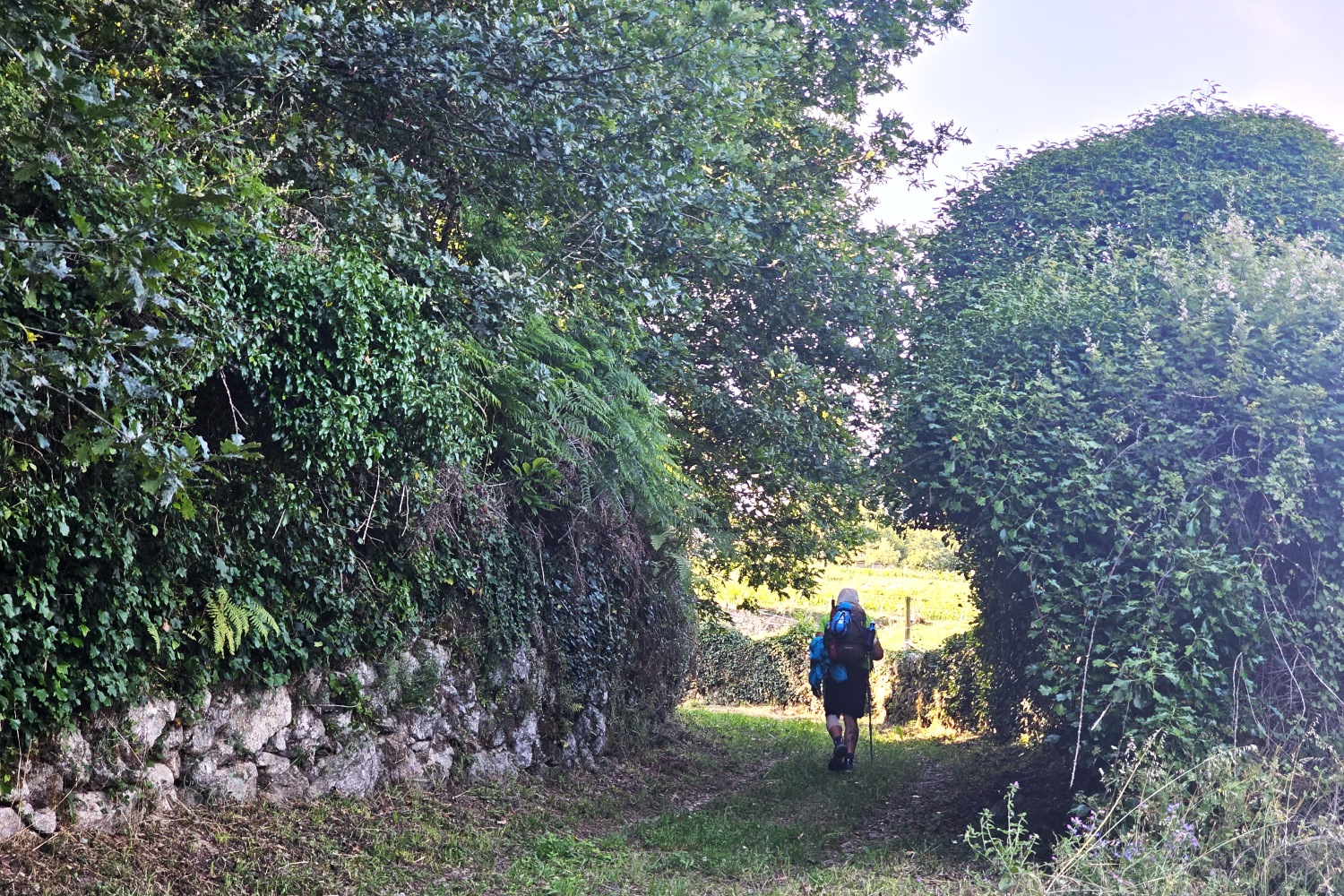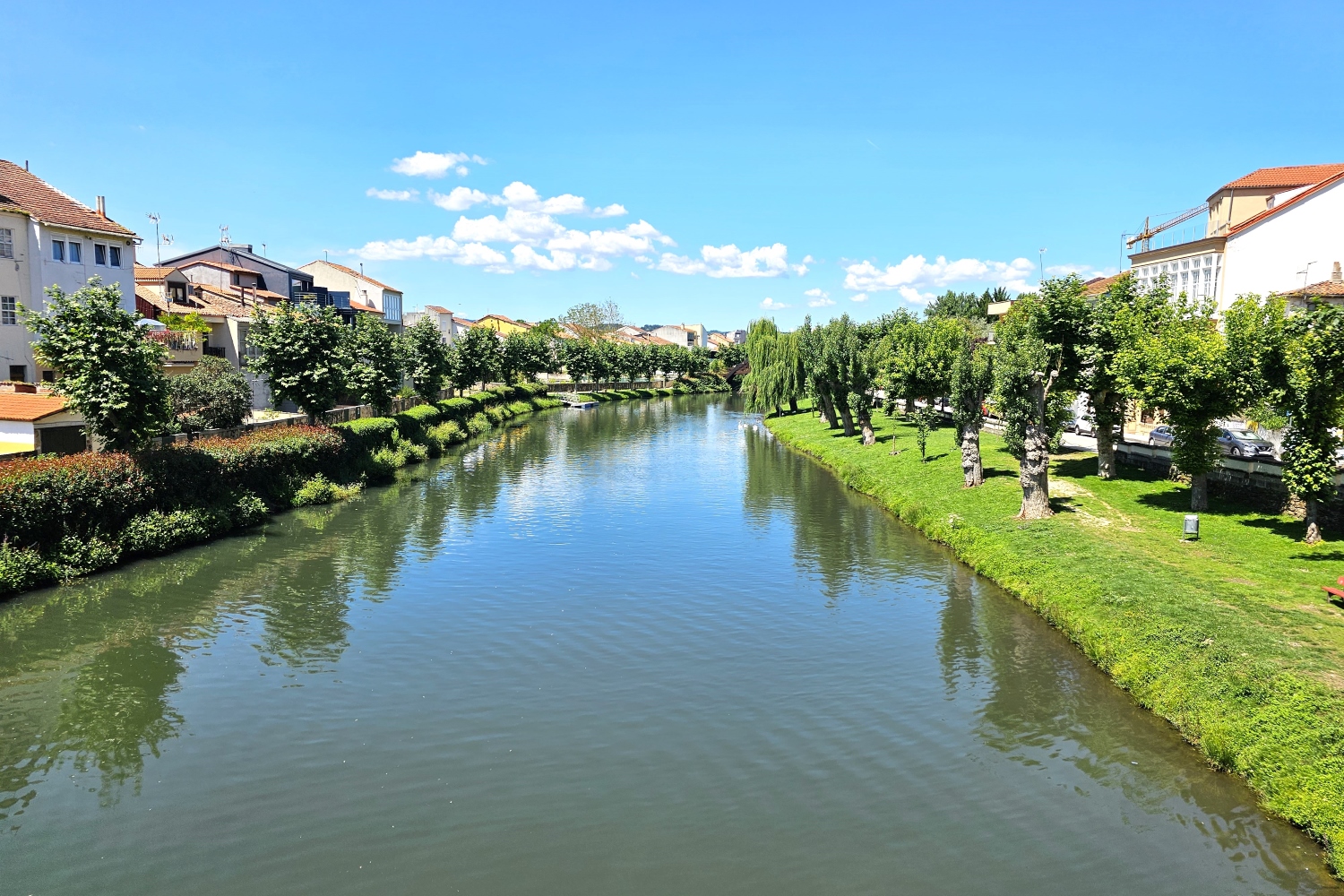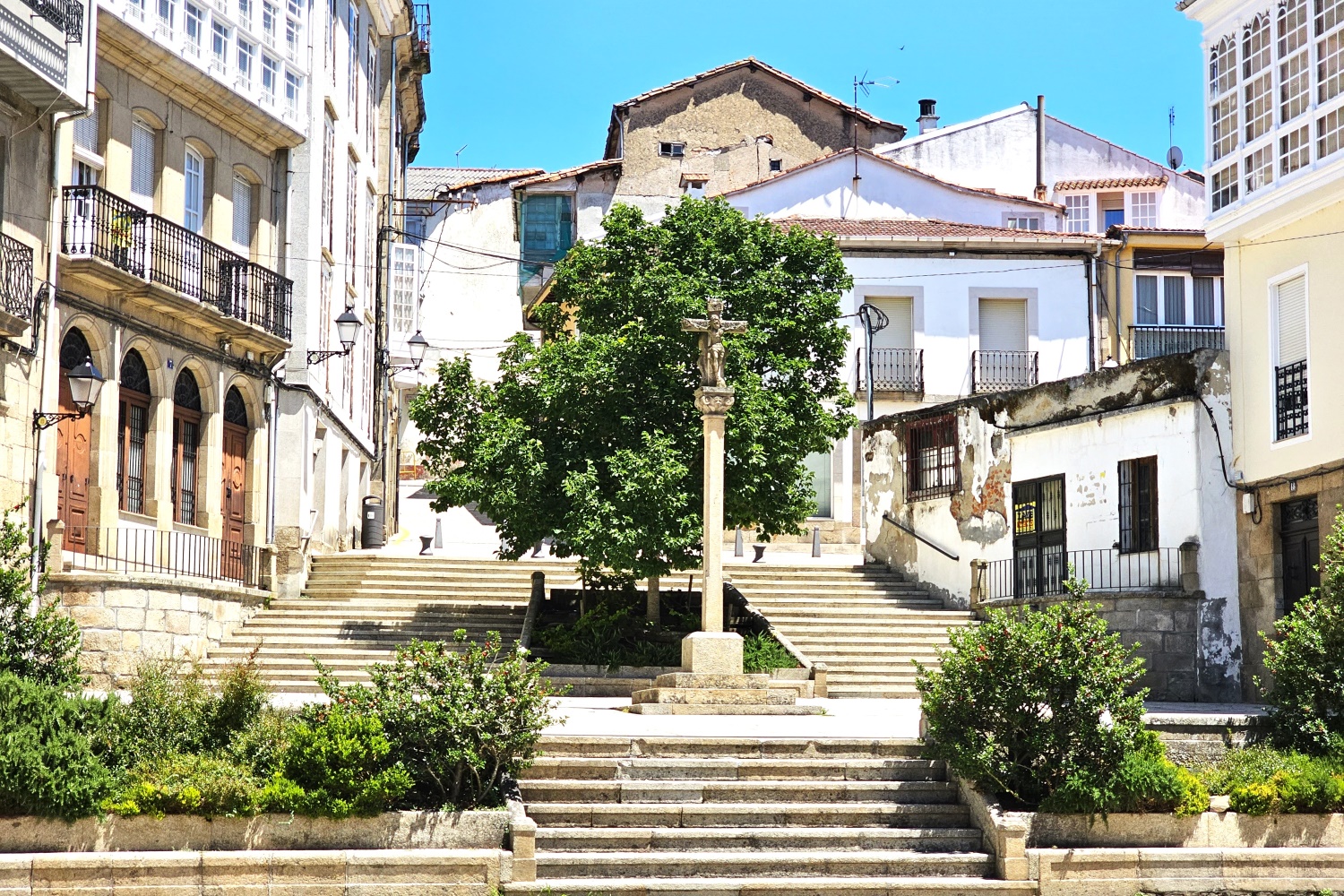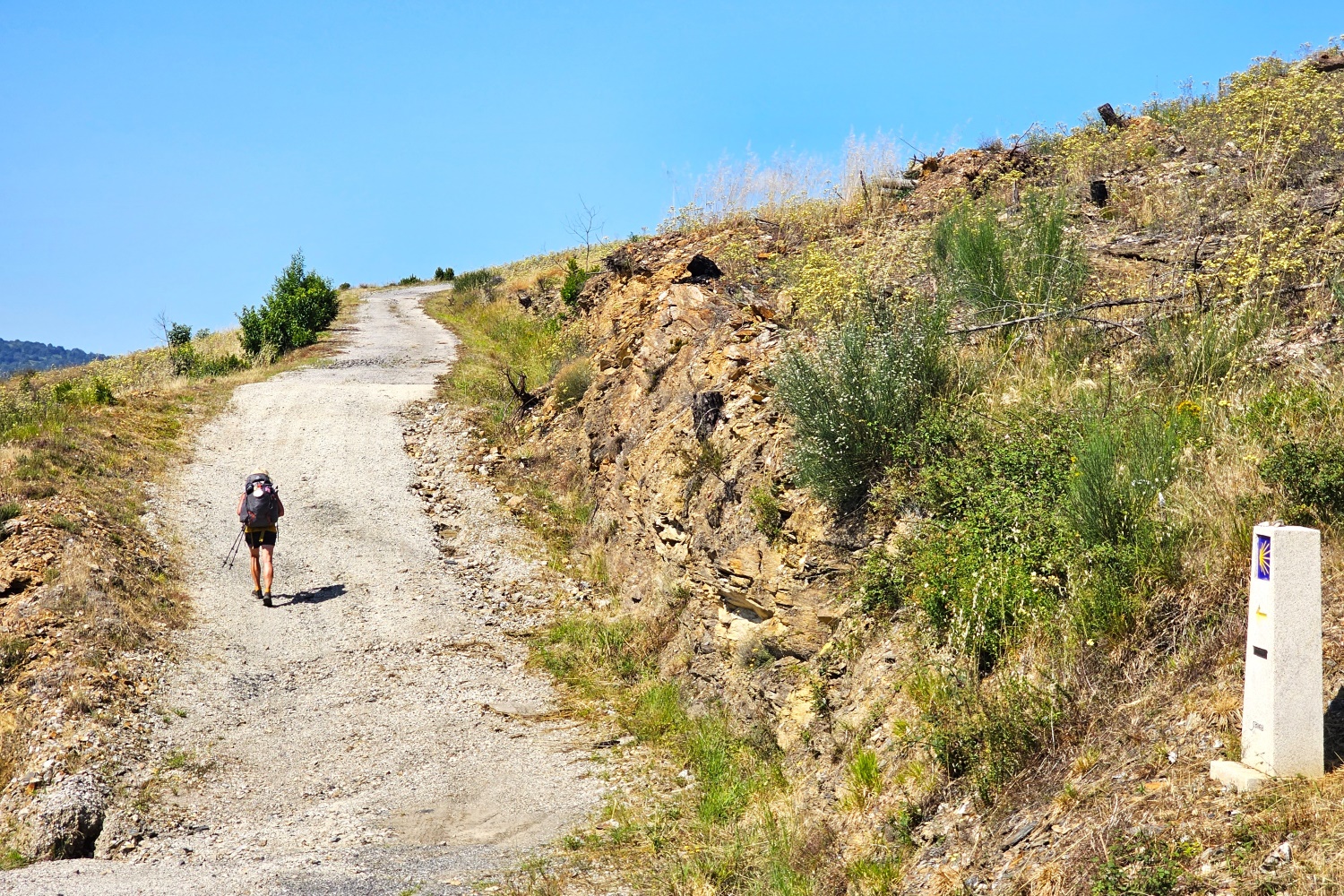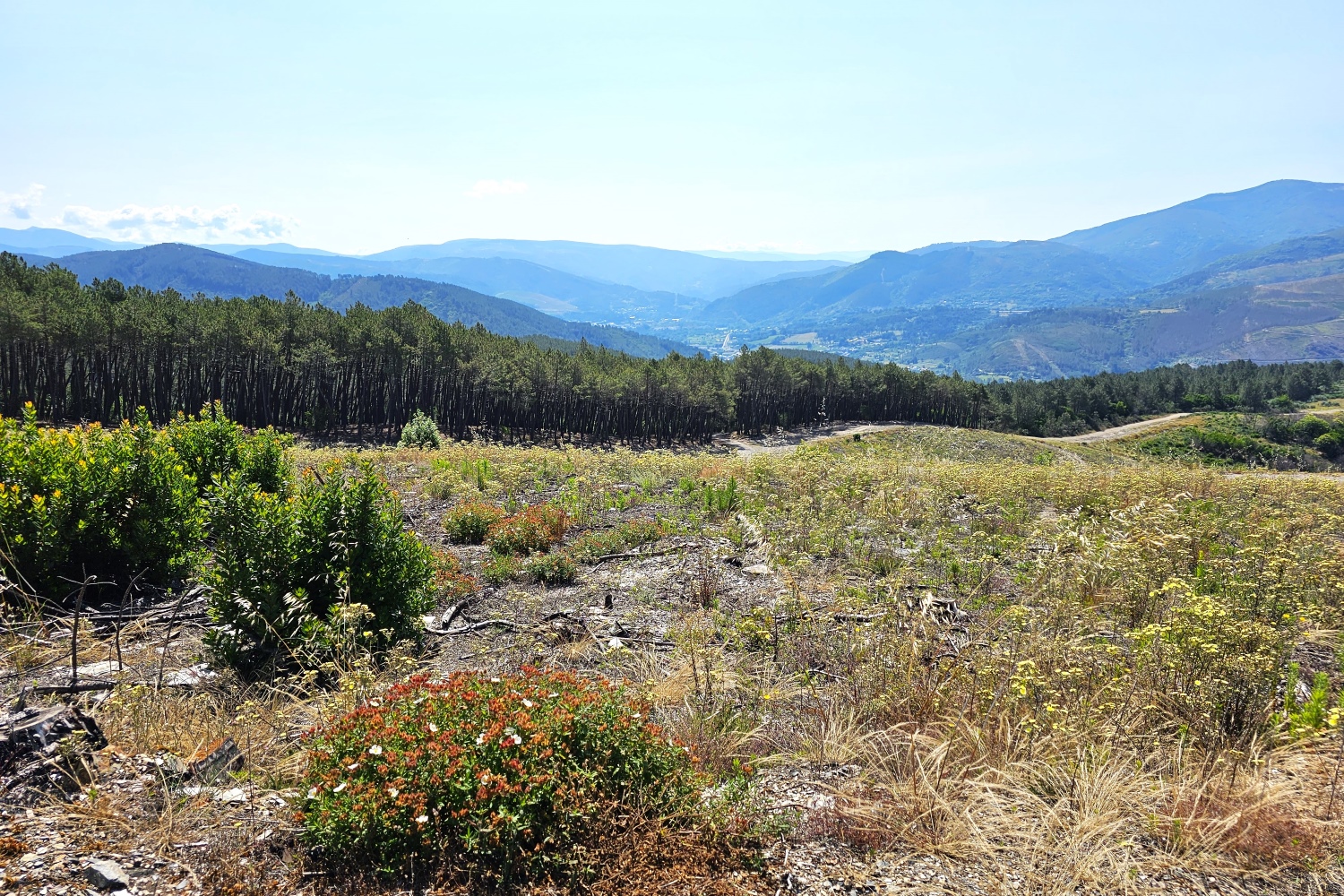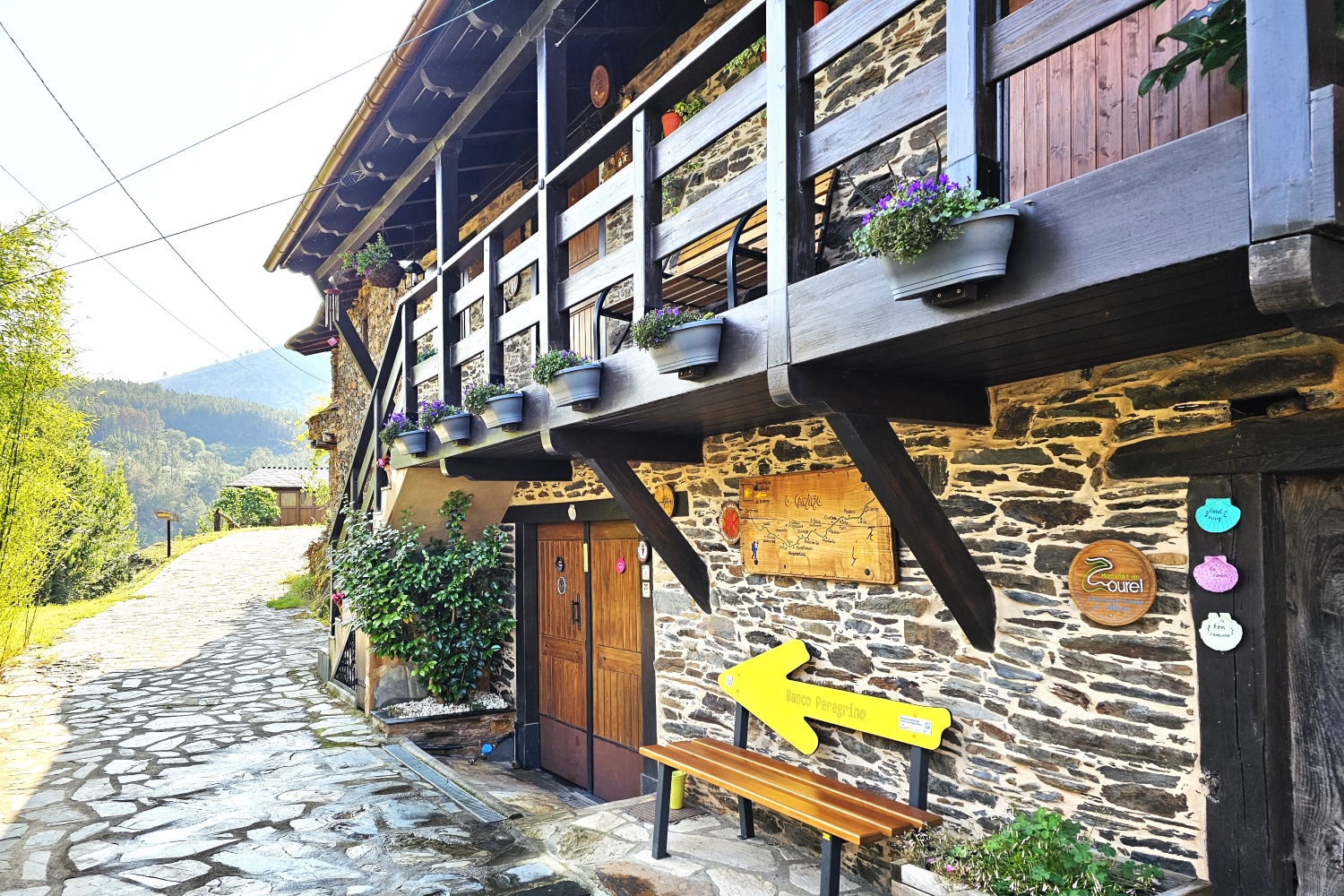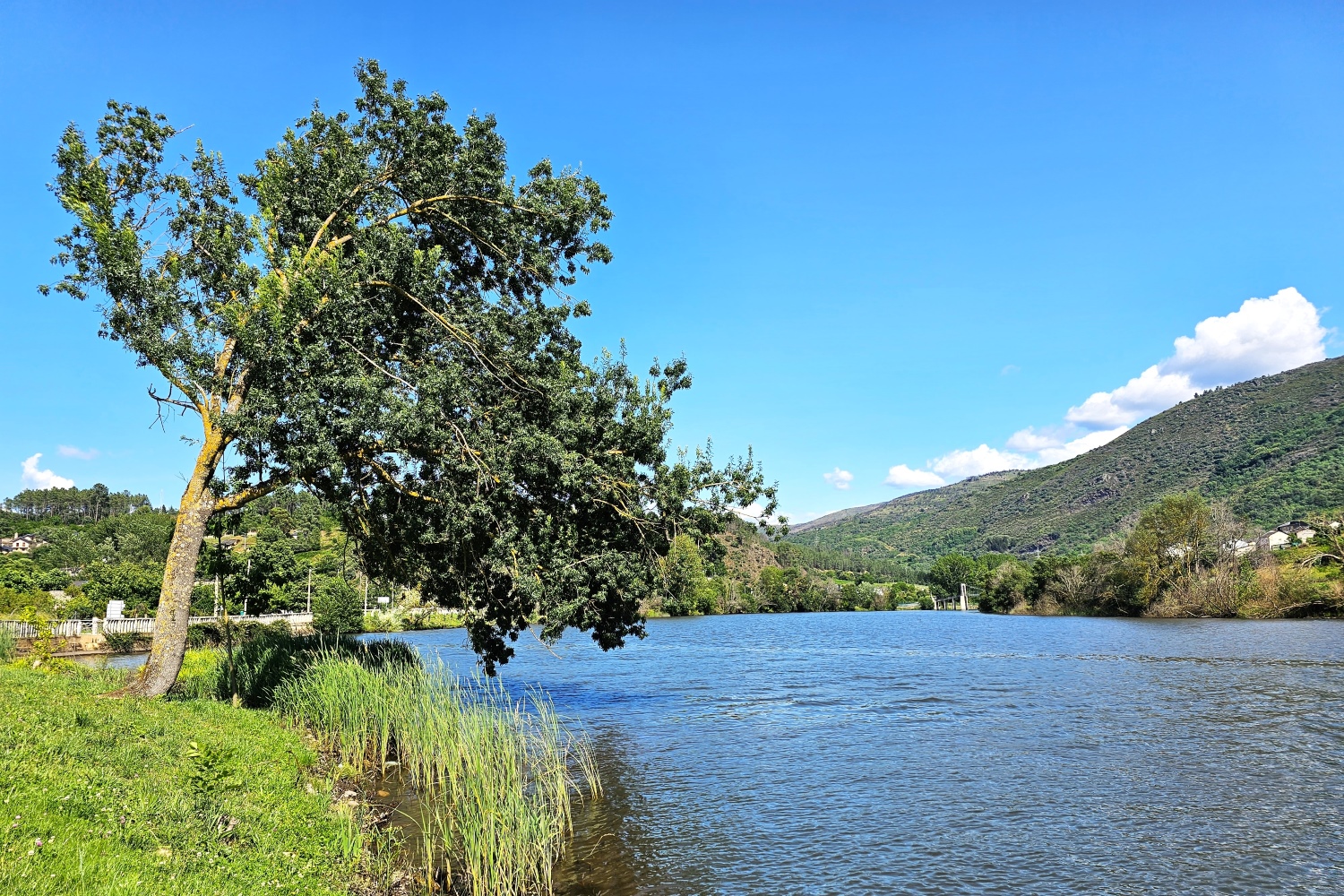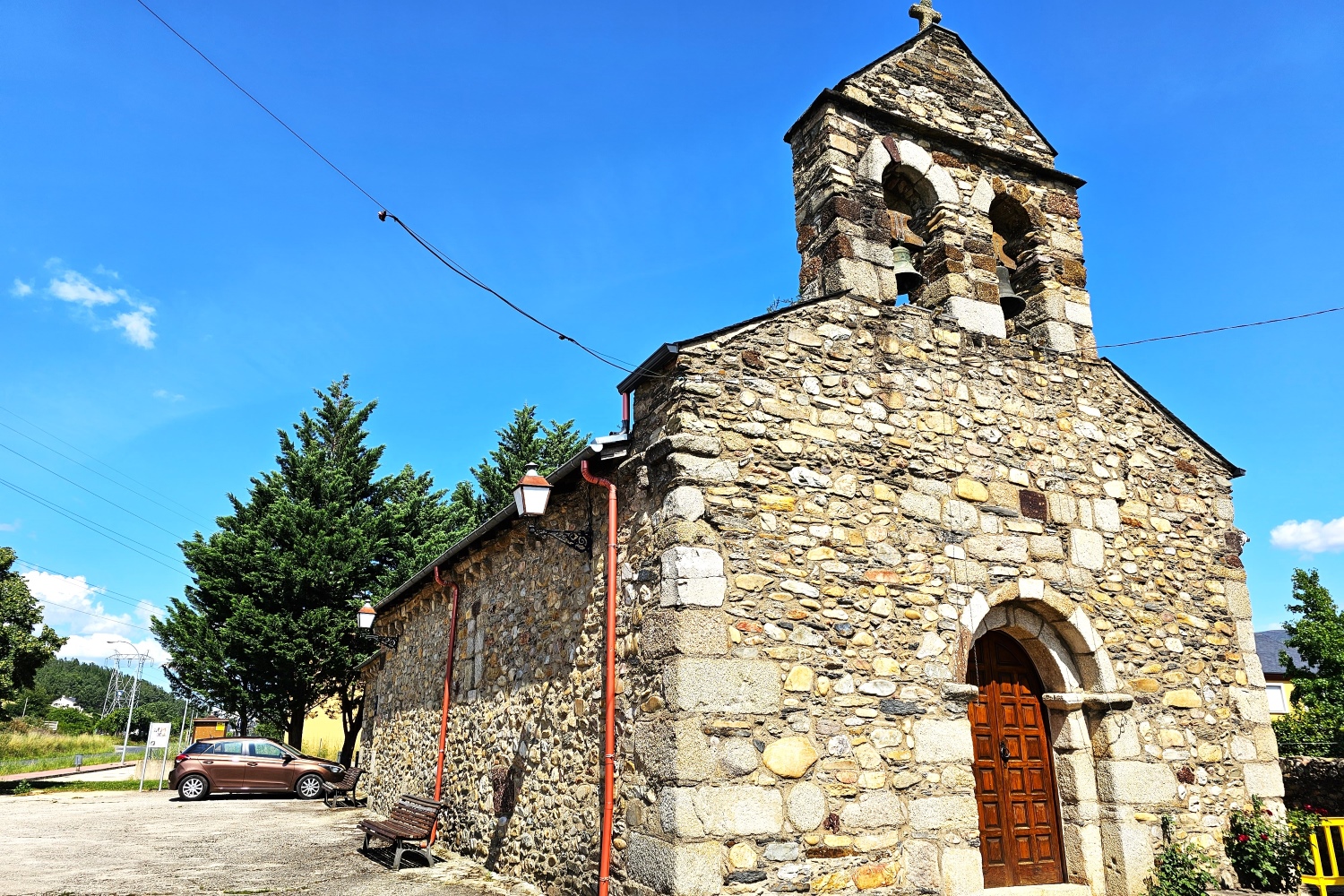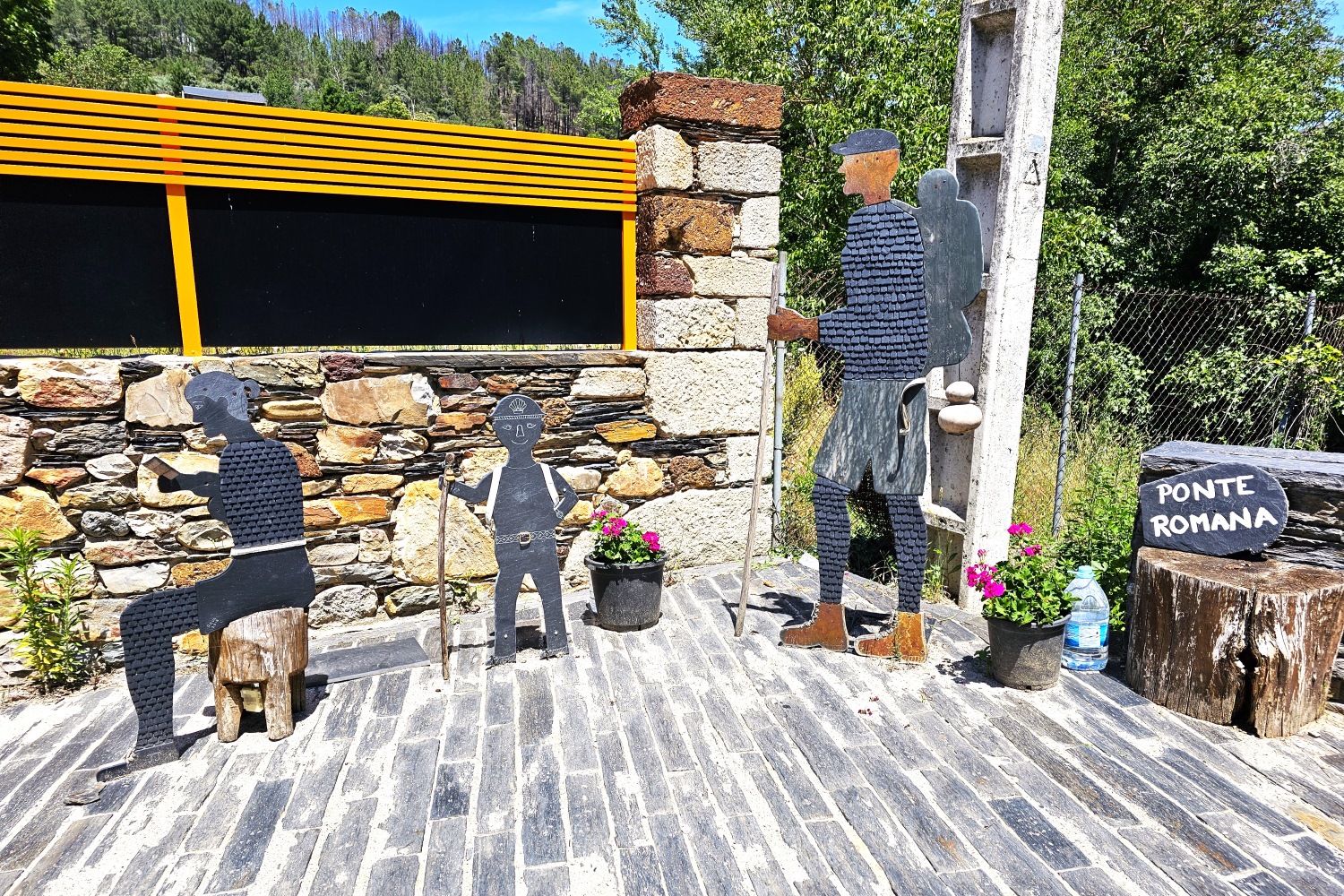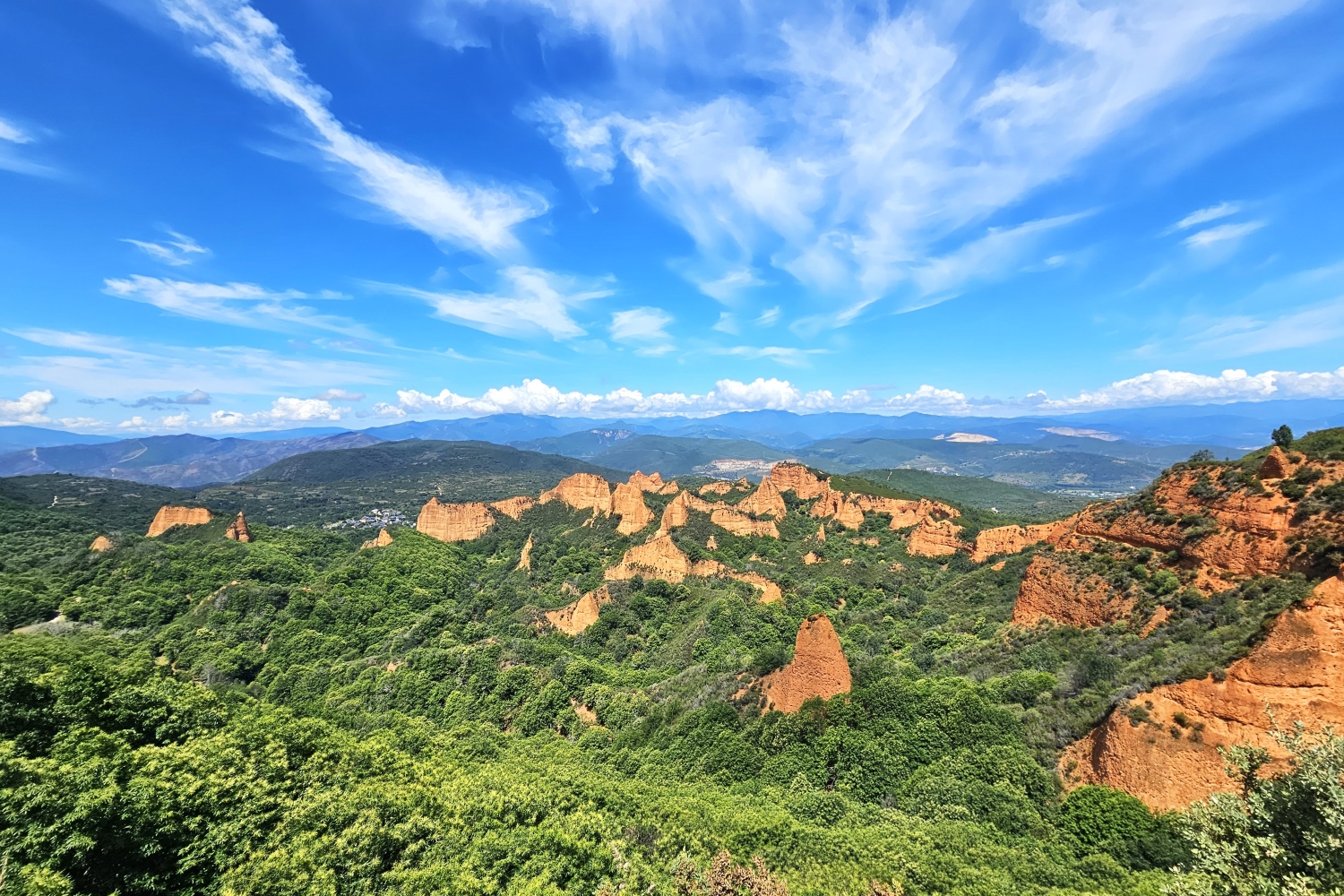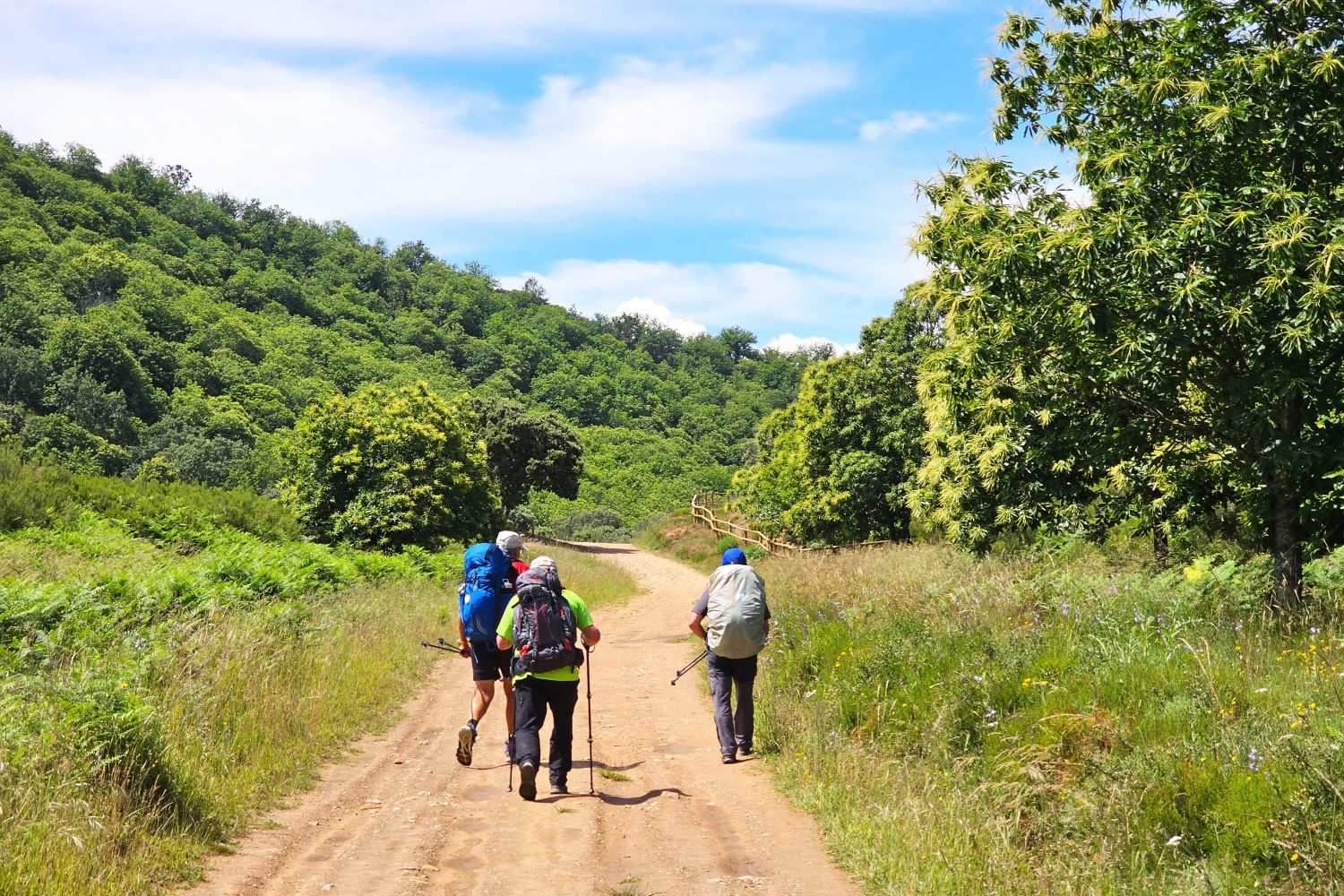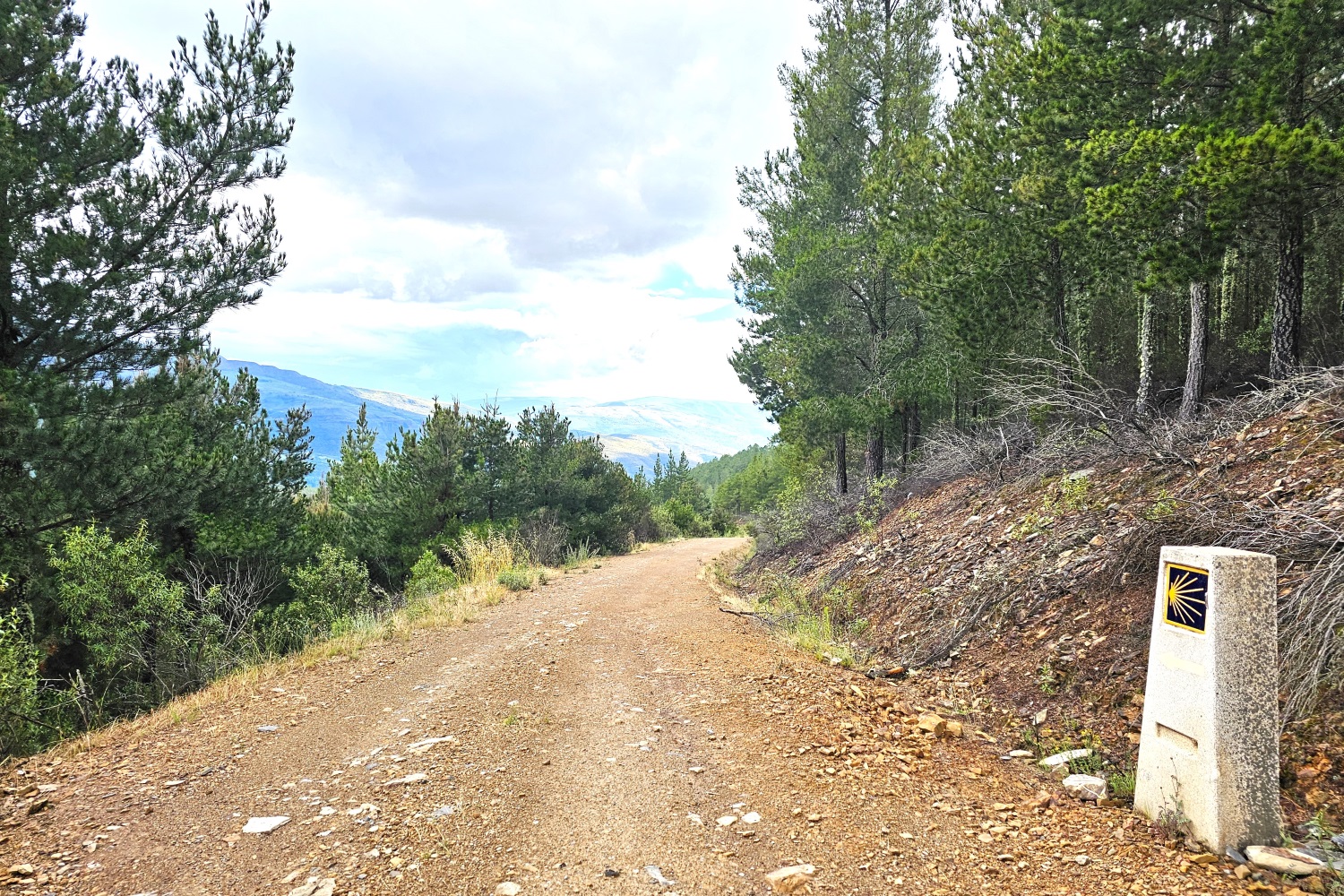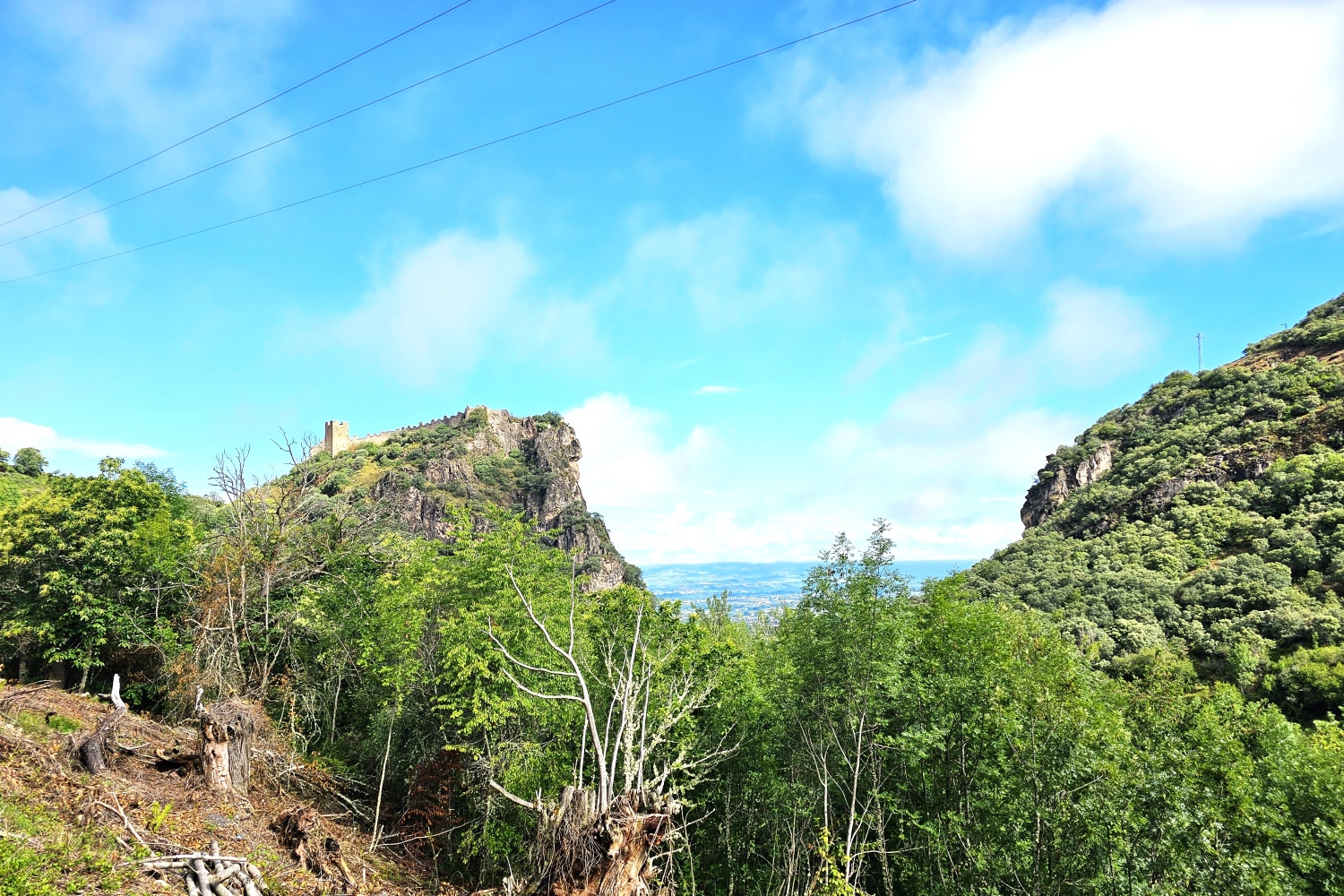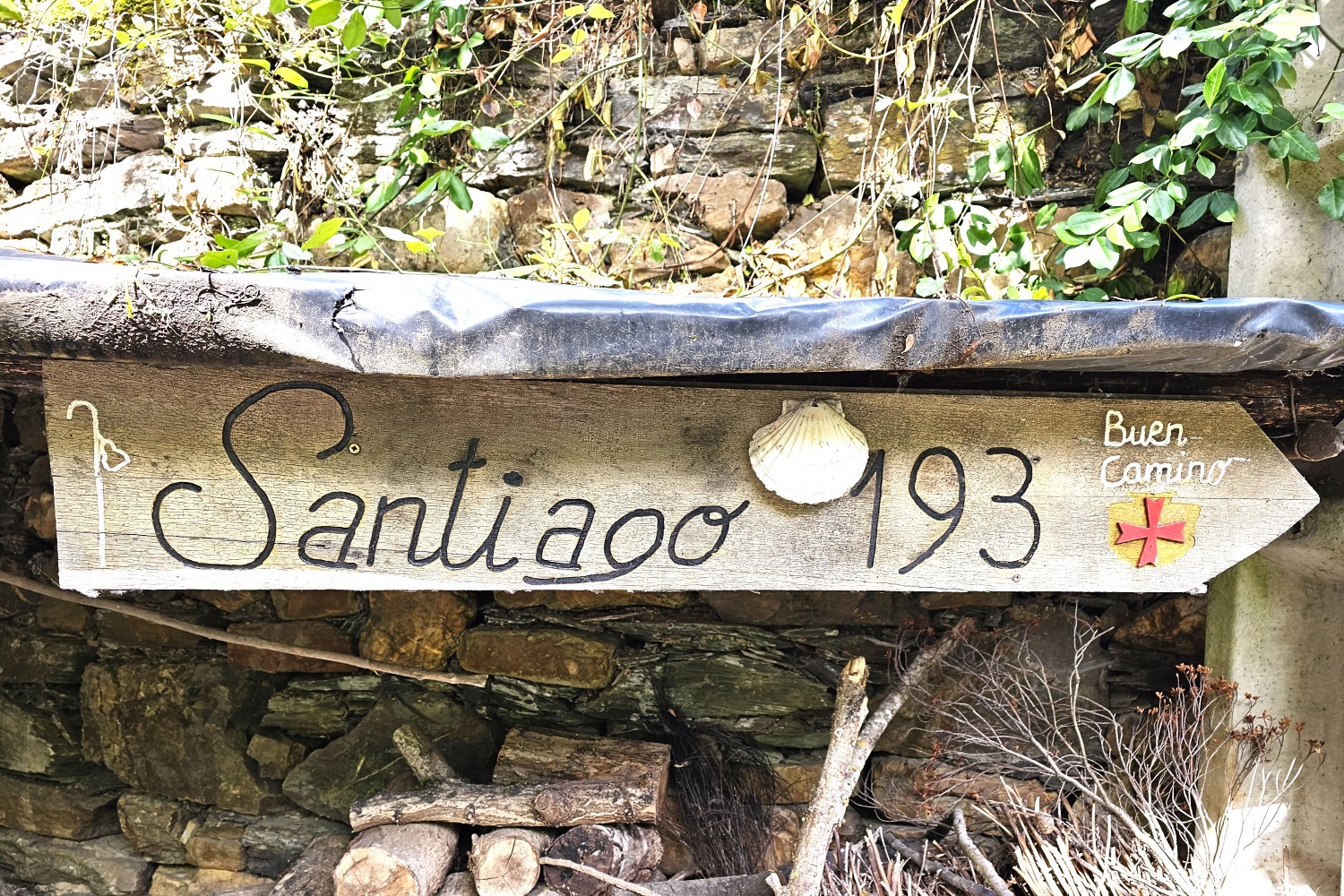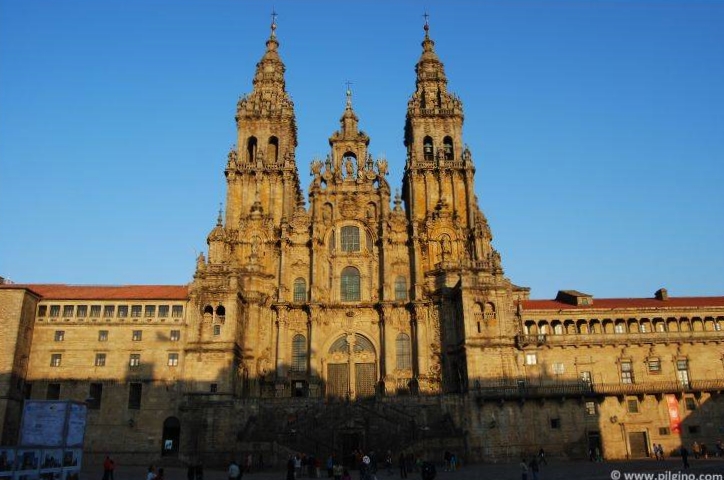
Full Camino de Invierno:
Self-Guided Tour
Ponferrada ⇒ Santiago de Compostela
The Camino de Invierno, the Winter Way, is a great alternative to the Camino Francés, which is particularly busy in the summer months, and leads from Ponferrada further south to Santiago de Compostela. In addition to the beautiful riverside landscapes of the Sil and Miño, the Camino de Invierno crosses the fascinating landscape of Las Médulas, which has been declared a World Heritage Site.
Tour Type: Self-Guided
Availability: April through October
Duration: 16 Days Total / 13 Days Walking
Total Distance: 263 km. (163 mi.)
Difficulty: moderate
Average distance: 20.2 km. (12.5 mi.) / Day
Prices (per person):
Double Room:
Starting from € 840
Single-Occupancy Room:
Starting from € 1.350
What’s Included:
15 nights in single / double room
En-suite facilities
English-speaking emergency assistance
Your full digital Travel Info Package
Details ⇒
We are proud to be working together with hand-picked, high quality and mostly locally owned and operated service providers.
Your journey will be booked through, and your Travel Package will include all the information you will need to access your lodging locations and to process your check-in.
Optional Add-ons:
Luggage transfer on walking days
Breakfasts (subject to availability)
Lodging for additional night(s) stays
Airport transfers (by taxi)
Details ⇒
If you wish to walk your Camino Stages with a light backpack, carrying only the basic necessities, we will be happy to arrange for your luggage to be forwarded from one hotel to the next on your walking days.
Breakfasts are not available everywhere, and they are often served late, starting around 8 am. However, if you wish to include brekfasts, we will be happy to do so, where possible.
Spending an extra night in a given town throughout your journey is often a good idea: you give your body a rest, relax and enjoy exploring the town. In Santiago, two nights are included in most of our Tours by default as we believe it’s the least a Pilgrim would need to enjoy the City; however, you have the option to opt out of it.
We will be happy to arrange for an airport shuttle transfer for you from your airport of arrival to the starting point of your journey. The same goes for the departure, unless you end your journey in Santiago and fly out of Santiago Airport. In that case, a taxi can be easily arranged for the time of your choice directly at the Reception Desk at your Hotel.
What’s not Included:
Flights
Travel Insurance
Tour guide
Meals
Details ⇒
We do not book flights, nor organize any rail or commercial bus-line travel. However, if you need assistance in deciding how to get to and back from your Camino Tour, we will be happy to assist you with tips and ideas!
We strongly recommend to all our travelers to get a Travel Insurance; however, we do not sell any such policies. For our international clients, it is best to get a policy in their country of residence, as some countries offer insurances only to their own residents.
This is a date-flexible tour; therefore, it is self-guided – no Tour Guide will be accompanying you. If you are interested in joining a Group Tour with a Tour Guide, please check our Guided Tours page. (Note: our Guided Tours take place on set dates that are planned ahead.)
Highlights
Even though the Camino de Invierno, the Winter Way, has only been officially recognized as a way of Saint James since 2016, it was already used by the Romans as an alternative route to the Camino Francés (French Way) to circumvent the climb of the snowy O Cebreiro Pass during the winter months. From Ponferrade, initially all the way to Lalín, the route continues further south than the Camino Francés, following for the most part the natural course of the Sil, taking pilgrims through the four Galician provinces of Lugo, Ourense, Pontevedra, and A Coruña, where it meets the Camino Sanabrés.
After a total of about 263 kilometers/163 miles, the final destination of all pilgrims, Santiago de Compostela, is finally reached.
Read More about this tour ⇒
As one of the lesser known pilgrimage routes, it is a great alternative to the Camino Francés, which is particularly busy in the summer months, and has a lot to offer both in terms of scenery and culture. In addition to the beautiful riverside landscapes of the Sil and Miño, the Camino de Invierno crosses the fascinating landscape of Las Médulas, which has been declared a World Heritage Site. In addition, it passes many Romanesque churches, some of which are impressively located in the ravines and slopes of the rivers.
Impressions from the Camino
Itinerary
Day 1: Arrival in Ponferrada
Independent arrival to Ponferrada. We booked your hotel. Proceed to your room, explore Ponferrada, and prepare mind and body for the Camino.
Day 1: Arrival in Ponferrada
Independent arrival to Ponferrada. We booked your hotel. Proceed to your room, explore Ponferrada, and prepare mind and body for the Camino.
Day 2: Ponferrada – Borrenes • 21.2 km. (13.2 mi.)
After a walk through the old town and past the Templar Castle, the pilgrimage continues via the Puente Mascarón to the starting point of the Camino de Invierno. Just before the first hamlet, pilgrims walk through the Caleyón de Merayo, a sunken lane with cliff walls 6 meters/20 feet high, which is said to date back to Roman times. Other small, lovely villages, very typical of El Bierzo, will be crossed along the Way of Saint James. Behind Villavieja, the impressive Castillo de Cornatel invites you to visit. On small tarred roads, the route then leads to the beautiful village of Borrenes, the destination of our day’s stage.
Distance: 21.2 km. (13.2 mi.), ↗ 716 m (783 yd), ↘ 691 m (756 yd) | Given the elevation gain, probably the most difficult stage of the day, but also one of the most beautiful.
By taking the shortcut without the detour to Villavieja, 16.6 km (10.3 mi)
Day 3: Borrenes – Las Médulas – Puente de Domingo Flórez • 15.3 km. (9.5 mi.)
A very beautiful path leads pilgrims today through the village of Las Médulas and later, steadily downhill, to Puente de Domingo Flórez. Highly recommended, but also quite taxing is a detour via the Mirador (“viewpoint”) de Orellán. From this point, you can admire the médulas in all their splendor. The paths up and down are also very scenic. In the village of Las Médulas, in addition to the many bars, you can visit the information center. Afterwards, the route descends a fair bit to the day’s final destination.
Distance: 15.3 km. (9.5 mi.), ↗ 432 m (472 yd), ↘ 613 m (670 yd) | A short stage that leaves plenty of time to visit the information center or join one of the walking tours offered.
By taking the detour to the Mirador de Orellán, 17.8 km (11.1 mi)
Day 4: Puente de Domingo Flórez – O Barco de Valdeorras • 18.7 km. (11.6 mi.)
Today, you leave El Bierzo and enter Galicia. Right at the end of Puente de Domingo Flórez, you will cross the Sil and the Way of Saint James will now lead you through Galicia all the way to Santiago de Compostela. The Sil is your constant companion both today and during the two following stages, as well as the railroad tracks to Montorte de Lemos. The opposite side of the river in the narrow Sil Valley presents many extraction areas for slate, which is mined in large quantities in Galicia and El Bierzo. On beautiful paths and through small villages, the Winter Way of Saint James leads today to O Barco de Valdeorras.
Distance: 18.7 km. (11.6 mi.), ↗ 645 m (705 yd), ↘ 696 m (761 yd) | Difficulty: Easy
Day 5: O Barco de Valdeorras – A Rúa de Valdeorras (Fontei) • 15.4 km. (9.6 mi.)
Followers of James the Apostle now discover more and more vineyards along the way. The Valdeorras Region is the warmest in Galicia and is known for its good wines. As such, the Valdeorras wine region is also a protected designation of origin. On this rather short stage, the Sil and also the well-known railroad track are again the companion of pilgrims striving to the west.
Distance: 15.4 km. (9.6 mi.), ↗ 264 m (289 yd), ↘ 271 m (296 yd) | Difficulty: Easy
Day 6: A Rúa de Valdeorras (Fontei) – Quiroga • 27.1 km. (16.8 mi.)
The first kilometers/miles of this stage are still characterized by quite a lot of traffic. Soon, however, the route continues on a very small tarred road far above the Sil through the solitude. Over and over again, magnificent views of the Sil and the entire Sil Valley present themselves. Some very small villages, which almost have the character of museums, are crossed during the pilgrimage until you finally reach the small town of Quiroga..
Distance: 27.1 km. (16.8 mi.), ↗ 1.126 m (1.231 yd), ↘ 1.175 m (1.285 yd) | Difficulty: Moderate to challenging.
If you want to shorten this rather long stage, you can take a taxi (not included) in the morning to Autoneum Spain SAU, then about 4 kilometers/3 miles less)
Day 7: Quiroga – Castroncelos – (Salcedo) • 20.8 km. (12.9 mi.)
Today, pilgrims of the Way Saint James change location from Valdeorras to the more famous wine-growing area of Ribeira Sacra. This is where the Romans laid out the first terraces for their wine. The red wine grape Mencía is very widespread, whose wine pilgrims should definitely enjoy in the next few days. In the early hours of day, the Sil is still the companion on the way, but the route soon ascends high up in the Galician mountains. Lonely paths invite you to meditate. Near Castroncelos is the meeting point for the transfer to the accommodation (not included in the price).
Distance: 20.8 km. (12.9 mi.), ↗ 911 m (996 yd), ↘ 687 m (751 yd) | Difficulty: Moderate
Day 8: (Salcedo) – Castroncelos – A Broza – (Outeiro) • 23.1 + 1.6 km. (14.4 + 1 mi.)
Transfer (not included in the price) back to the Camino de Invierno in the morning. The village of A Pobra de Brollón invites you for a coffee during the early hours of the day. Afterwards, the Way of Saint James leads again through tiny villages and over a mountain to Monforte de Lemos. The remains of the castelos (“castles”) and the monastery (today parador [“inn”, “hotel”]) can be seen from afar. Once in Monforte, pilgrims must decide whether the beautiful old town is enough for them or whether they still venture the climb up to the castelo. Next, the pilgrimage continues on small roads out of Monforte until it reaches A Broza. Here, you will leave the Way for about 1.6 kilometers/14.4 miles to reach the accommodation located “in the countryside.”
Distance: 23.1 + 1.6 km. (14.1 + 1 mi.), ↗ 316 m (346 yd), ↘ 426 m (466 yd) | Difficulty: Easy/ Moderate
Day 9: (Outeiro) – A Broza – Chantada • 1.6 + 21.5 km. (1 + 13.4 mi.)
In the morning, the route first goes back the approximately 1.6 kilometers/14.4 miles to the Camino de Invierno. After that, the day continues with a very Galician start, with many small villages that are reached on narrow paths and some small tarred roads. A highlight of the day is reached after about a third of the way, the Romanesque church in Dimondi. Romanesque churches are rare in this part of Galicia. The route then descends, in part very steeply, to the Miño. Here, pilgrims can nicely see the viticulture in steep terraces. After crossing the Miño, the route ascends steeply again and continues to Chantada.
Distance: 1.6 + 21.5 km. (11 + 13.4 mi.), ↗ 784 m (857 yd), ↘ 682 m (746 yd) | Difficulty: Moderate to challenging with a steep ascent and elevation gain towards the end of the stage
Day 10: Chantada – Rodeiro • 26.3 km. (16.3 mi.)
This day is marked by the ascent to Mount Faro. At 1187 meters/3894 feet, the Mirador de Monte do Faro is the highest point on the Camino de Invierno. The ascent is, on good paths, quite moderate, but does require energy. Pilgrims are then rewarded with a magnificent view of what feels like all of Galicia. Afterwards, the route passes wind turbines and then continues through a very Galician landscape all the way to the small town of Rodeiro.
Distance: 26.3 km. (16.3 mi.), ↗ 890 m (973 yd), ↘ 736 m (805 yd) | Difficulty: Moderate
Day 11: Rodeiro – Lalín • 22.7 km. (14.1 mi.)
Today, pilgrims are accompanied by gentle ascents and descents. Beautiful paths and every now and then a small work of art made of granite delight those who pass in front of them. An interesting church in Pedroso is worth a visit, as are the burial chambers in the cemetery of San Xiao. The route continues over the medieval bridge Ponte de Pedroso until it finally reaches Lalín.
Distance: 22.7 km. (14.1 mi.), ↗ 456 m (499 yd), ↘ 536 m (586 yd) | Difficulty: Easy
Day 12: Lalín – Silleda • 15.5 km. (9.6 mi.)
The Way of Saint James leaves Lalín early along the Pontiñas. The following kilometers/miles are highly dominated by agriculture. As on many days before, the route goes through narrow correidoras (connecting paths between the in part tiny villages) and past many fields. In between, the pilgrims have to avoid a herd of cows being driven from one pasture to another.
Distance: 15.5 km. (9.6 mi.), ↗ 343 m (375 yd), ↘ 410 m (448 yd) | Difficulty: Easy
Day 13: Silleda – Ponte Ulla • 20 km. (12.4 mi.)
In Silleda, the pilgrims from the Camino Sanabrés or the Vía de la Plata join them. There is no need to worry, however, that this path would become overcrowded. Even here, the number of pilgrims is rather small. The most interesting architectural feature of this day is certainly the Romanesque church of San Martiño de Dornelas. A very beautiful example of Galician Romanesque architecture. A few kilometers/miles ahead, the Way of Saint James reaches Ponte Ulla.
Distance: 20 km. (12.4 mi.), ↗ 302 m (330 yd), ↘ 730 m (798 yd) | Difficulty: Easy/ moderate, longer descent to Ponte Ulla
Day 14: Ponte Ulla – Santiago de Compostela • 20.7 km. (12.9 mi.)
The Ulla is the river on which, according to legend, the body of the apostle was brought from the sea to Padrón/Iria Flavia. Here at Ponte Ulla, however, the river can no longer be navigated. This day begins with a trip through green Galicia again. Afterward, the urbanization increases until finally the final destination of all pilgrims of the Way of Saint James is reached: the Santiago de Compostela Cathedral. Congratulations, dear Pilgrim: You. Have. Arrived. Celebrate, and enjoy!
Distance: 20.7 km. (12.9 mi.), ↗ 686 m (750 yd), ↘ 494 m (540 yd) | Difficulty: Easy/ moderate, at the beginning a longer ascent to Outeiro
Day 15: Free Day in Santiago de Compostela
We strongly feel that, after this amazing journey, it is instrumental to spend (at least!) one full, extra day and another night in Santiago, which is why it is added in our program “by default” (though you can opt out of it). This is both the time and the place to unwind, to reflect upon and enjoy your journey’s end and, most importantly, to take it easy on yourself with your post-Camino re-entry into the big, wide World. Aside from that, UNESCO-listed city of Santiago is full of incredible places to explore, and you can collect your very well-earned Compostela (Certificate of Completion) as well as attend the Pilgrims’ Mass at the Cathedral.
Day 16: Departure from Santiago de Compostela
Farewell, Santiago; farewell, Camino – and safe travels on your journey back home or to your next adventure! And here is another option well-worth considering: to continue the Camino on to Finisterre (the “End of the World”) and / or to Muxía – two stunning, mystical places on the majestic Atlantic coast.
¡Buen Camino!
What’s gonna be your Camino?
Get your free quote
Fields marked with * are mandatory and may not be left blank.
Tour Combination Options
Our Full Camino de Invierno: Self-Guided Tour can be easily combined with:

Camino Fisterra:
Self-Guided Tour
Santiago de Compostela ⇒ Fisterra
Starting from € 310
Duration: 6 Days Total / 4 Days Walking
Distance: 90.5 km. (56.2 mi.)
Difficulty: easy/moderate
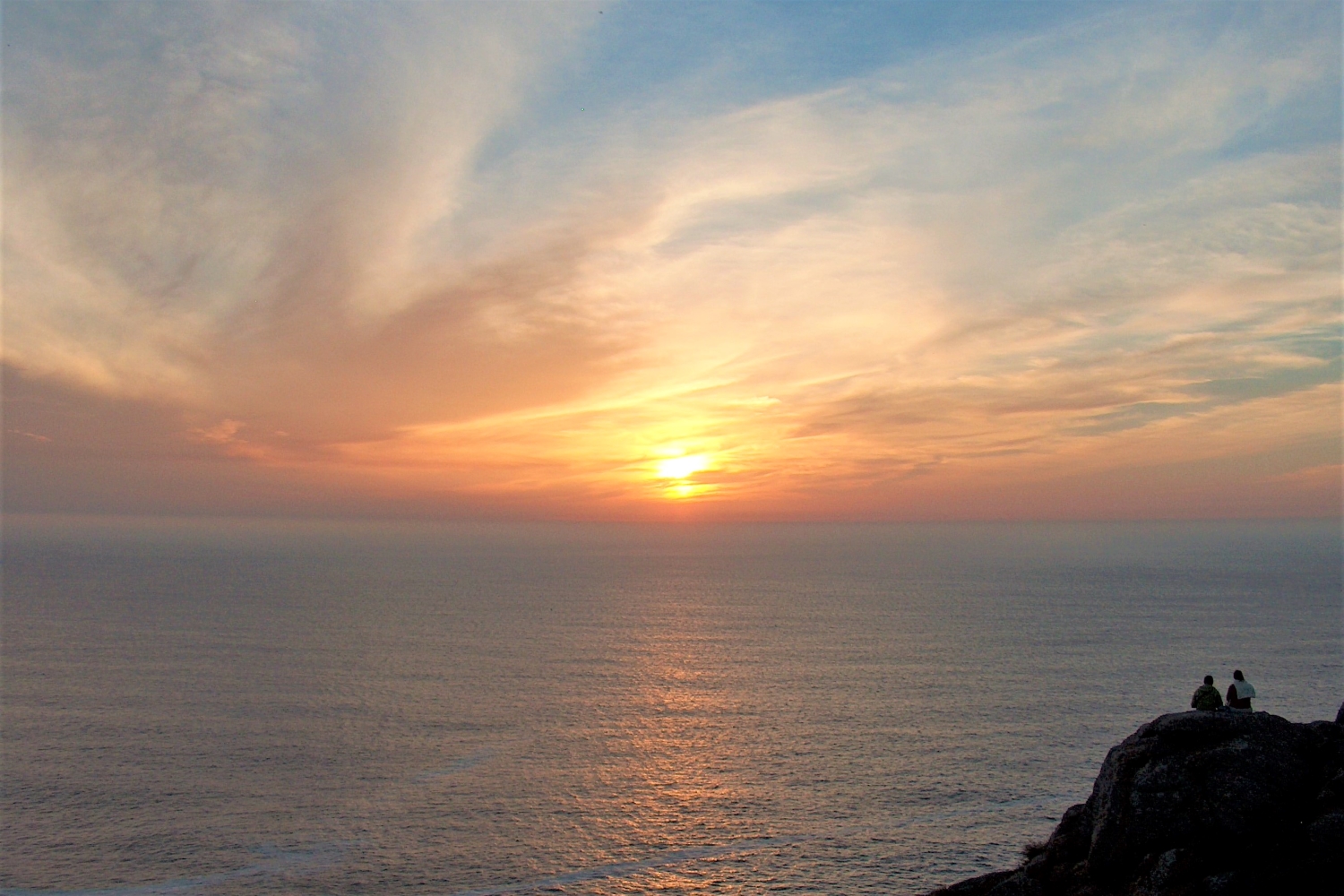
Camino Fisterra – Muxía:
Self-Guided Tour
Santiago de Compostela ⇒ Fisterra ⇒ Muxía



